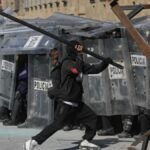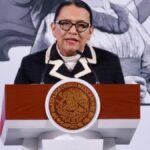Background on the Situation
On Sunday, 72 Colombian military personnel were taken hostage by dissident former Revolutionary Armed Forces of Colombia (FARC) rebels in the Cañón del Micay, a region known for cocaína production and rebel activity outside the historical peace agreement with the Colombian government.
Who are the FARC?
The FARC (Fuerzas Armadas Revolucionarias de Colombia) were a Marxist-Leninist guerrilla group that engaged in an armed conflict with the Colombian government for over 50 years. In 2016, a historic peace agreement led to their demobilization and transformation into a political party. However, some factions continued armed activities, becoming dissident groups.
Recent Developments and Actions
According to a spokesperson from the Colombian Ministry of Defense, as reported by AFP (Agence France-Presse), 45 military personnel were released on Monday following their retention since Sunday.
- Sunday’s Extraction: The Colombian army successfully “extracted” 27 of the hostages.
- Monday’s Release: The remaining 45 military personnel were freed.
Impact and Context
The hostage situation highlighted the ongoing challenges faced by Colombia in maintaining peace and security, particularly in regions where illegal activities like cocaína production thrive. The dissident FARC factions, rejecting the peace agreement, continue to destabilize these areas.
The release of the 45 military personnel is a positive step towards restoring stability and demonstrating the Colombian government’s commitment to protecting its citizens. However, it also underscores the need for sustained efforts to address the root causes of conflict and illegal activities in these regions.
Key Questions and Answers
- Who were taken hostage? Seventy-two Colombian military personnel were taken by dissident FARC rebels following a military operation in the Cañón del Micay.
- How many were released? Forty-five military personnel were freed after the initial extraction of 27 on Sunday.
- Who are the FARC? The FARC were a Marxist-Leninist guerrilla group that engaged in conflict with the Colombian government for over 50 years. They signed a peace agreement in 2016 but some factions continued armed activities, becoming dissident groups.
- Why was this situation significant? This hostage situation highlighted the ongoing challenges Colombia faces in maintaining peace and security, particularly in regions affected by illegal activities like cocaína production.






